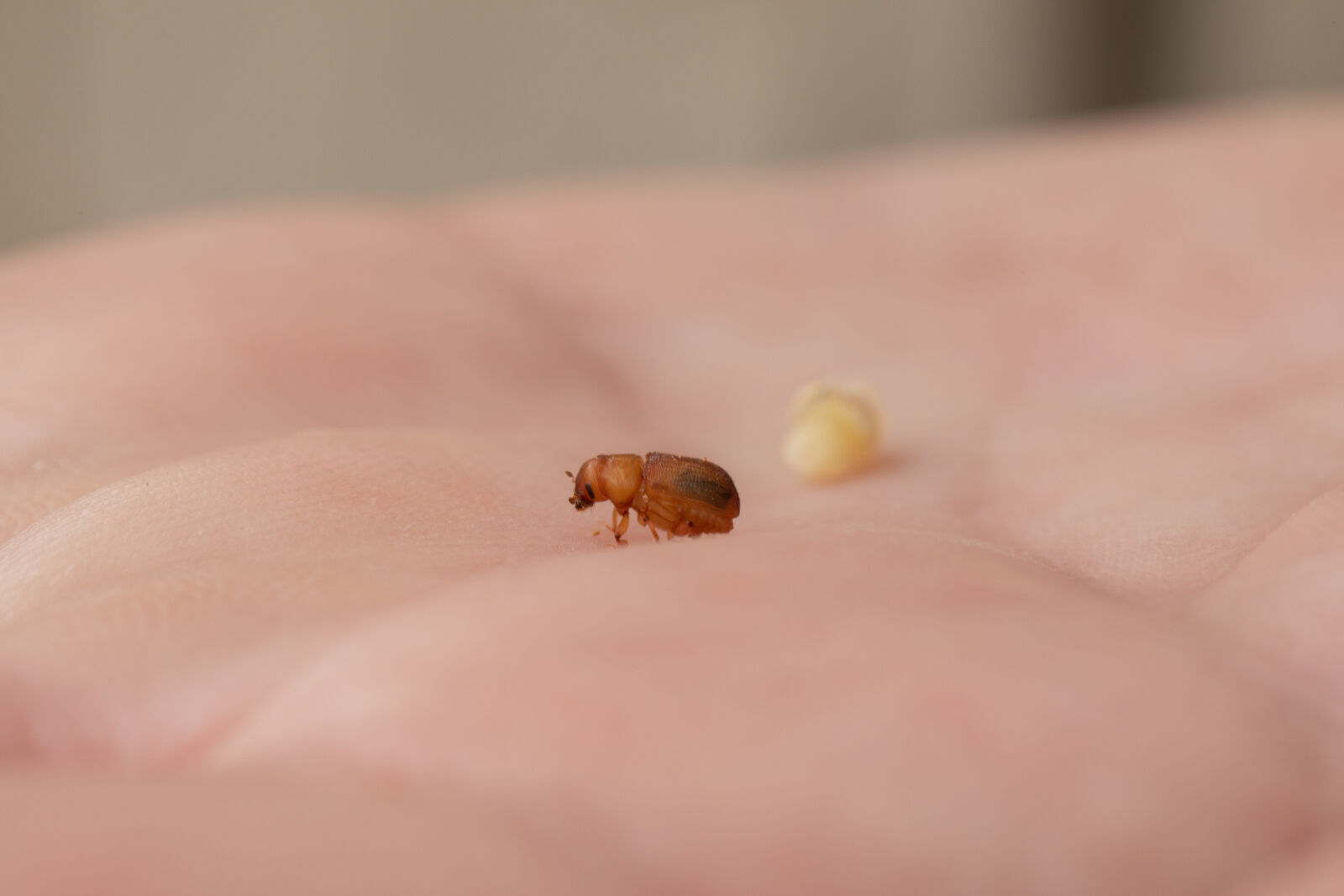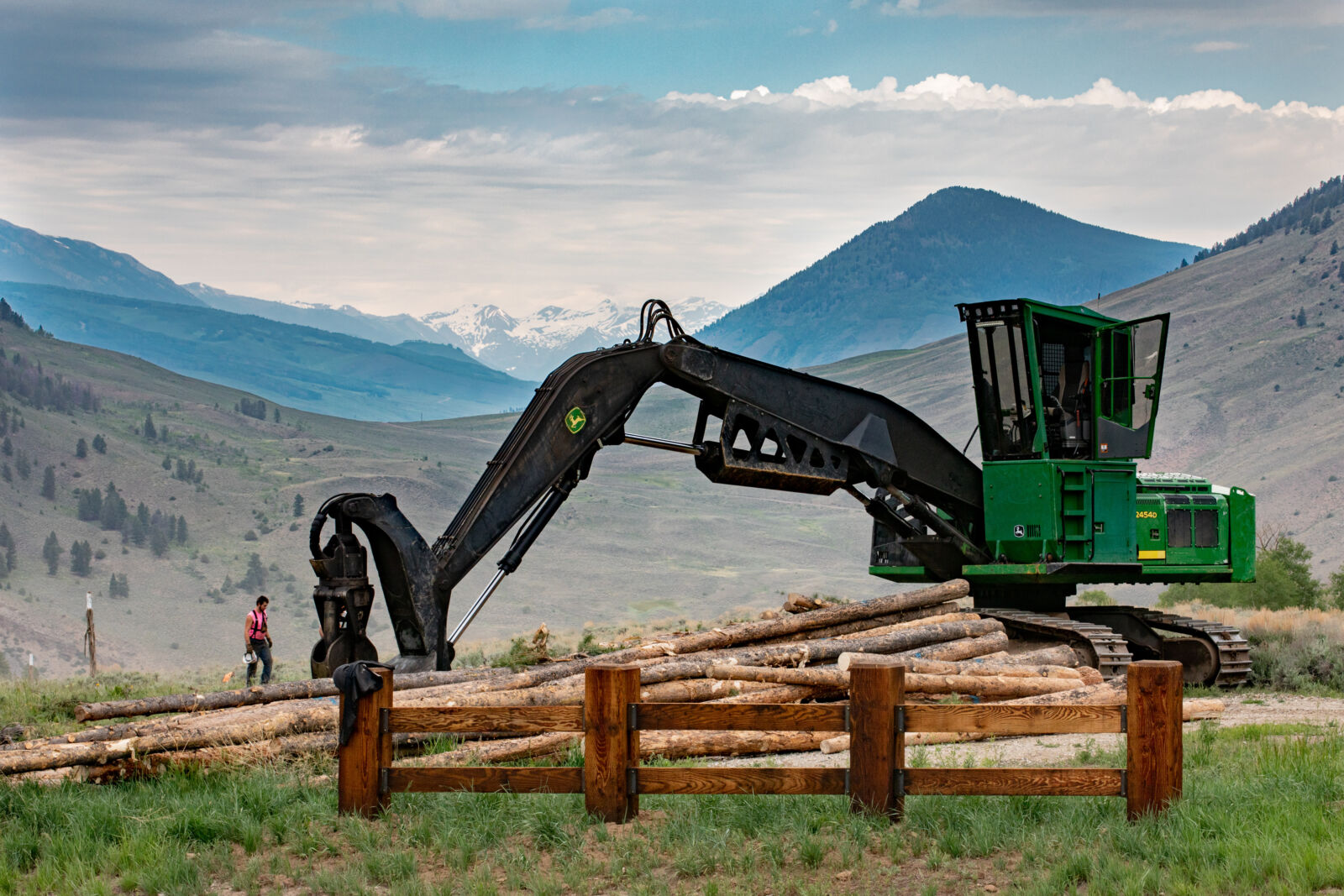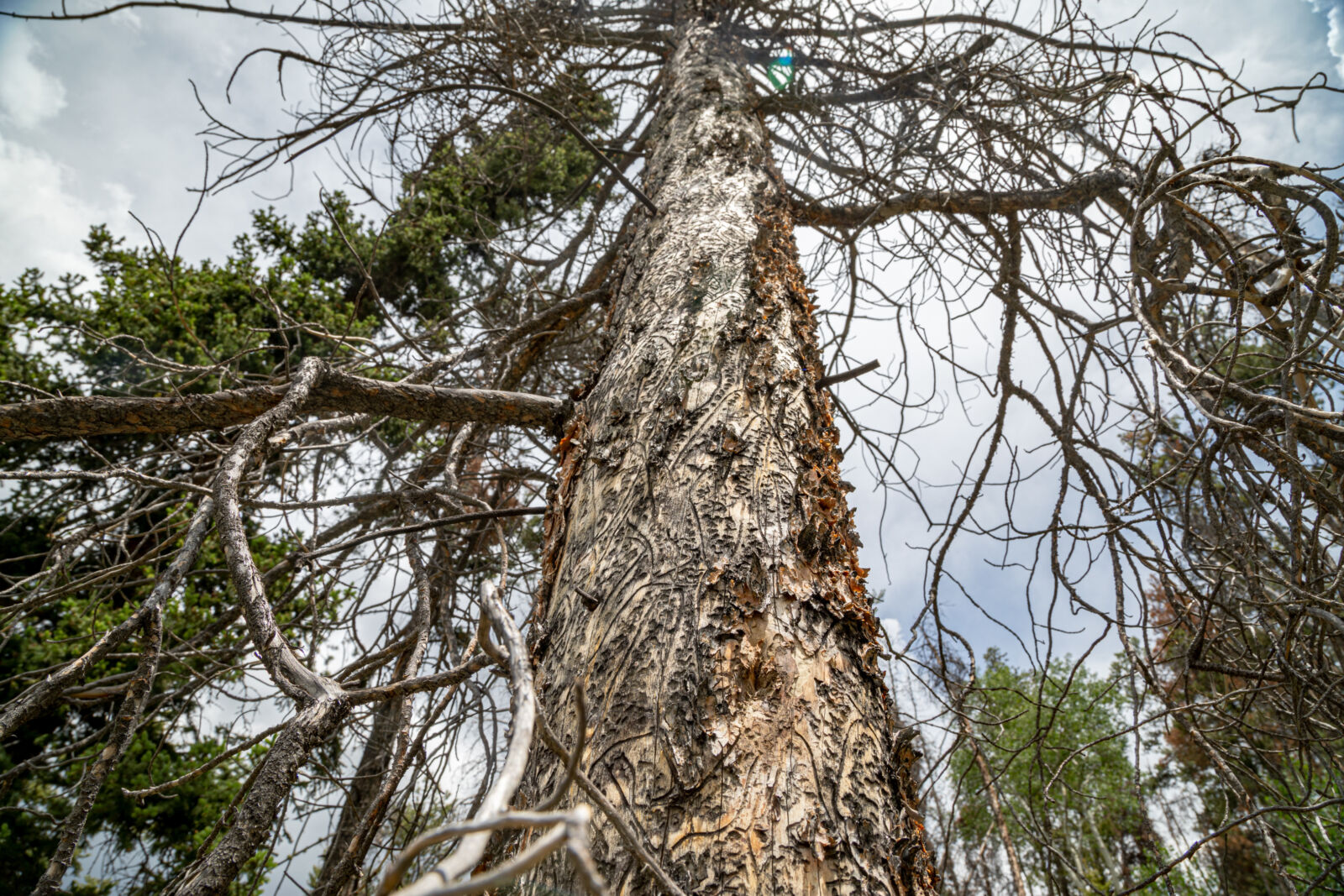The question came to light early in the fall of 2019. USDA Forest Service entomologists had just conducted aerial surveys in coordination with the Colorado State Forest Service (CSFS). On-the-ground investigations followed. Soon specialists revealed their diagnosis: after decimating 3.4 million acres of forests across Colorado from 1996 until the epidemic finally ran its course around 2014 , mountain pine beetles were back, actively infesting approximately 600 acres of lodgepole pine forests across private and National Forest System lands in the Gunnison Valley.
The new diagnoses may have caused the Forest Service to pause – but only momentarily. The agency soon introduced the National Forest Foundation (NFF) to the project, and we readily agreed to join our partners for the battle ahead. The previous beetle epidemic turned lodgepole pine forests throughout Colorado into tree graveyards following the predictable change in needle color from yellow and orange to red – and eventually to lifeless gray. Together with CSFS, we hoped to prevent the same fate for Gunnison National Forest and adjacent private lands in Taylor Canyon.
The new, emerging outbreak was gnawing at the edges of the wildland-urban interface, the zone where human development and private land meets the wildlands managed by the Forest Service, including the Fossil Ridge Recreation Management Area and 14,000 acres of the Fossil Ridge Wilderness. This swath of contiguous lodgepole pine forests in Taylor Canyon supports critical community resources – water, wildlife habitats, recreational opportunities, power lines and other infrastructure. For the hundreds of private residences along Taylor Canyon, the outbreak also represented a new, heightened need for community protection in the face of increased wildland fire risk.

Kellon Spencer Photography
Now aligned in a partnership, with a shared sense of urgency, the Forest Service, Colorado State Forest Service and NFF charted a path to stop the outbreak – or at least do everything possible to get ahead of it.
But there were complicating factors. Snow was on the ground and wasn’t expected to melt until this May at the earliest. Until then, specialists couldn’t complete necessary on-the-ground surveys prior to treatments. And when the snow melted? There’d be just one month to treat over 100 acres of forest if we wanted to stay ahead of the expected beetle flight period in early July. Finally, because beetles don’t regard landownership, the heaviest infestations made their homes over a mosaic of federal and privately-owned lands, some of which involved steep and difficult-to-access slopes.
We acted quickly. Our Forest Service partners lead the charge while making space for NFF and CSFS to share their expertise and capacity. The NFF was proud to support the group’s coordinated efforts. Between February and May 2020, the Forest Service completed planning and analysis in record-breaking time. From there, CSFS rolled up their sleeves to complete project layout and design in coordination with the Forest Service, while the NFF led the team’s contracting efforts to ensure we treated acres before the beetles started to fly.
Along the way, our group also worked on unlocking a key piece of the puzzle: private landowner support. Luckily, landowners from the Gunnison Highlands and Wilder on the Taylor communities stepped up to offer crucial access and support for the effort. The communities shared our sense of urgency, and immediately recognized the importance of the work ahead. These communities will continue to be important partners as the project moves forward.

Kellon Spencer Photography
Kellon Spencer Photography
The first phase of the project began on June 10 with the professional contractor hitting the ground to work - quickly. With close oversight from the partners, the contractor cut and removed pine beetle-infected trees (a treatment called “individual tree sanitation”) to lessen the chances of beetles flying to infect a nearby tree. In some areas the trees had to be removed via helicopter due to the steep slopes of the landscape and short timeframe for removal.
The contractor also proactively removed vulnerable lodgepole pine trees, while enhancing opportunities for aspen trees to grow and maintaining as much of the natural landscape as possible. Some of the beetle-killed wood will be utilized for firewood or other uses – although we had to ensure the infected logs would end up far enough away from lodgepole pine forests so beetles wouldn't continue spreading. Amazingly, contractor completed treatments by early July – just one week before beetles started to fly.
In order to stop a mountain pine beetle outbreak from becoming an epidemic, you must put all possible resources toward the attack. You mobilize your partners, leveraging their strengths and expertise. You collaborate like crazy. And you work – focused, diligently – as a team to prevent any further harm.

So where are we now? We have lofty goals yet to reach in 2020. The Forest Service, NFF and CSFS are now preparing for Phase 2 of this effort and we hope to reach our goal of getting ahead of the outbreak. Spurred by financial support from the Forest Service, NFF and our partners are working hard to raise necessary dollars and prep for the next phase.
Will we be successful? We may not know for years. And for some of us, that delayed resolution may keep us up at night, the thought of red trees inducing anxiety at unexpected times. But in the meantime, we know the Forest Service, CSFS, and NFF, in concert with the Wilder on the Taylor and Gunnison-Highlands communities, have put energy, resources, and tactics toward protecting our forest and community.
Please consider supporting this important project. Click here to learn how.

